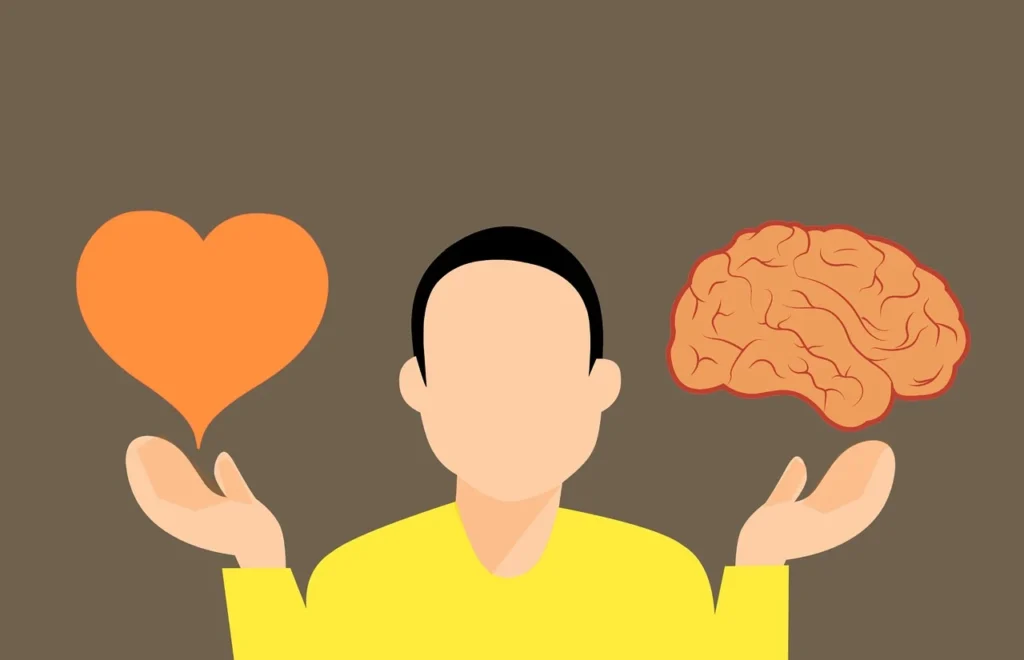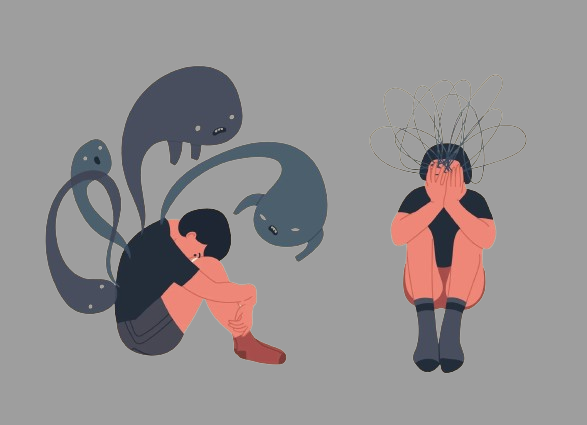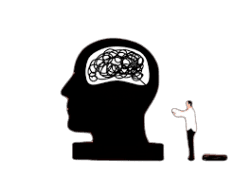One method that assists people in altering their thought processes is cognitive restructuring. It is a component of several psychotherapy modalities, such as cognitive behavioral therapy (CBT).
Restructuring one’s cognitive structure entails recognizing and disputing harmful beliefs. Helping individuals feel differently about things that irritate or bother them is one way to do this.
Cognitive restructuring strategies can also be applied in daily life to assist people manage stress, advance their careers, or get better sleep. Although a psychotherapist can assist an individual in mastering the skills, no professional training is necessary.
Cognitive deletion
Restructuring, or altering, a person’s beliefs and thought patterns is a practice known as cognitive restructuring. Reducing the negative effects that harmful thought patterns have on an individual’s wellbeing is the goal of this.
Cognitive restructuring is the process of gradually substituting a belief with a more useful or accurate one. A person could strive toward the idea that some people will like them and others might not, and that this is okay, rather than expecting that everyone will detest them if they reveal their own selves.

Cognitive restructuring aims to promote realistic, balanced thinking instead than forcing an individual to think in a positive way. It might assist someone in adopting new perspectives on a variety of topics, including:
- Relationship issues
- low self-worth
- stress,
- despair,
- anxiety,
- insomnia
examples
Some instances of cognitive distortions are as follows:
- thinking in black and white
- overly broad
- generality and
- excessive personalization
One way to become aware of these maladaptive thoughts as they arise is through cognitive restructuring. After that, you can try rephrasing them in a way that is more precise and beneficial.
How to Apply Cognitive Restructuring
Restructuring the brain requires a lot of work. The process of cognitive restructuring itself has some strength, but you can maximize it by using additional techniques and tools as well:
Calm yourself
Calming down is good for more than just stress and anxiety relief. It’s also essential for preserving both your bodily and emotional well-being. These are some techniques to assist you de-stress when things are stressful.
1. Start meditating—even a little bit will help.
Frequent meditation aids in mental relaxation and stress reduction. Start off each day for just five minutes, then progressively extend it. Take the Daily Calm or Daily Trip, for example, and start your day by concentrating on your breathing or the sounds around you.
2. Put it in writing (or speak)
Writing down your ideas and emotions might be helpful. Write them down in a notebook or give them to a reliable friend. Writing about your struggles can frequently aid in your emotional processing and help you see things from a different angle.
3. Try doing breathing techniques
As was already noted, breathing techniques are an effective means of promoting mental calmness. Try this breathing exercise the next time you’re feeling stressed to help you get your bearings.

4. Question your ideas
Our thoughts frequently turn to the worst-case scenario when we’re under stress. Make a conscious effort to confront these unfavorable ideas. Remind yourself of your prior accomplishments and your readiness if you’re experiencing anxiety before a presentation.
5. Take a stroll or otherwise move your body.
Frequent exercise has been demonstrated to help lower stress and promote mental clarity and happiness. Consider going for a little stroll during your lunch break or doing some yoga after work.
6. Use your hands to occupy your thoughts.
Stress-relieving activities that demand concentration and skill, such as knitting, painting, or gardening, can be helpful. If you’re experiencing anxiety, consider concentrating on something useful and enjoyable.
Practice mindfulness meditation
Although practicing mindfulness meditation on your own is quite simple, you can also benefit from guidance from a teacher or program, especially if you’re practicing for specific health purposes. Here are a few easy steps to help you get going alone.
Become at ease
Look for a cozy, peaceful area. Maintain a straight but not stiff head, neck, and back while sitting in a chair or on the floor. Wearing loose-fitting, comfortable clothing also helps to prevent distractions.

However, there is no dress requirement necessary because this exercise can be done anywhere and for any length of time.
Think About Using a Timer
A timer can help you focus on meditation and forget about time, even though it’s not necessary. It can also help you get rid of whatever excuses you have for stopping and doing something else. Ideally, the timer has a moderate, gentle alert.
It can also help make sure you’re not meditating for an extended period of time, since many individuals lose sense of time while they meditate. After your meditation, make sure you give yourself some time to realize where you are and slowly stand up.
Pay Attention to Your Breath
As you inhale and exhale, pay attention to the sensation of air entering and leaving your body. As breath enters and exits your nostrils, feel your stomach rise and fall. Observe the difference in temperature between the inhaled and expelled breaths.
Take Note of Your Thoughts
The objective is to become more at ease in the role of “witness” to your ideas rather than to stop having them. Don’t ignore or repress thoughts that arise in your head. Just take notice of them, stay composed, and anchor yourself with your breathing. Think of your ideas as moving clouds that you can observe as they move and evolve. Do this as many times as necessary.
Procedures and methods
Cognitive reorganization doesn’t adhere to a set process. Rather, a person employs a variety of strategies according to their particular requirements and the difficulties they face.
These methods are meant to gradually change someone’s perspective in order to make it more balanced.

Socratic methods
The Socratic style of teaching is posing a series of questions to a student until they either provide an inaccurate response or demonstrate that their reasoning is solid.
This approach may be taught in classrooms, but it can also be a helpful way to examine one’s own ideas.
When someone notices they are anxious, they could, for instance, question themselves:
- What worries me?
- What do I anticipate taking place?
- If that occurs, what will I do?
- How much of that matters?
- Why did I think this thought?
- Exists another reason or possible result
Avoiding mental mistakes
“Thought errors” refer to cognitive biases. They may consist of:
Becoming overly negative.
This is the act of concentrating on the direst situation. Catastrophizing individuals could believe the worst case scenario is also the most likely one.
“All or nothing” mentality.
Thinking too much is what this is. For instance, someone may think they have failed miserably if they accomplish something imperfectly.
Oversimplification.
This occurs when someone applies something broadly based on a single example. For example, someone may assume that just because they answered a math problem incorrectly once, they will do so consistently.
Enlargement.
This entails exaggerating the severity of minor issues
Taking emotional reasoning into account
When someone assumes that their views must be real only because they feel a certain way, they are engaging in emotional reasoning.
For instance, emotional reasoning might inform someone experiencing concern over a break-in at their house that this is because a break-in is probably going to occur. Their terror is heightened by this.

People who engage in cognitive restructuring are encouraged to pause and consider the supporting evidence for their beliefs. It demonstrates that not every idea or feeling is necessarily correct if there is no indication that stealing is likely to occur. It could be less stressful to learn how to distinguish between realistic and unrealistic thoughts
How Well Cognitive Restructuring Works
Many disorders, including SAD, have been effectively treated with cognitive restructuring. According to a 2014 study, post-event processing was lessened by cognitive restructuring. the effect of mindfulness techniques and cognitive restructuring on mood and post-event processing in social anxiety disorder.
After a social occasion, PEP describes the introspective thoughts you experience, like “I screwed it all up” or “Everyone saw how nervous I was.”
Another 2016 study makes the argument that facing events and progressively reducing anxiety is more important than trying to replace negative ideas.
Although the exact mechanism underlying cognitive restructuring’s effectiveness is unknown, it probably involves a combination of rationalized thought processes, exposure to anxiety-inducing situations, and less ruminative afterthoughts.
It’s definitely worthwhile to get expert assistance if you battle with persistently negative thinking. Within the framework of CBT, cognitive restructuring may offer substantial alleviation.



